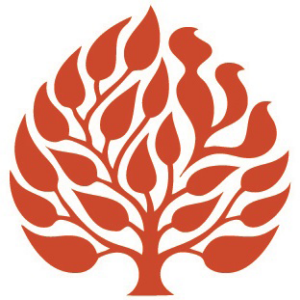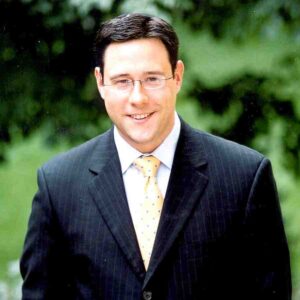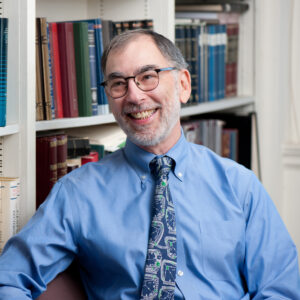
Life, the Universe, and Everything?
May 27, 2006 By JTS Alumni | Commentary | Bemidbar
By Rabbi Murray Ezring
Science fiction aficionados know the answer. The answer is forty-two, or so wrote Douglas Adams in his classic Hitchhiker’s Guide to the Galaxy. Numbers have always been important in Jewish tradition. So Adams might be correct. The number forty-two may contain tremendous religious significance. Four plus two equals six, the number of books in the Mishnah. Four times two equals eight, the number representing the covenant we have shared with our creator since the days of our patriarch Abraham. Six times seven, the result of multiplying the six days of the mundane workweek by the sanctity of Shabbat.
Read More
Diversity through Order
May 27, 2006 By Matthew Berkowitz | Commentary | Bemidbar
Order is the essence of Torah. In Genesis, God creates the world by imposing order on chaos; and in Exodus, God imposes order on a people shattered by 400 years of servitude. The transition is especially dramatic for the Israelites — their change in orientation must be two-fold, physical and spiritual. Nothing less than a revolution is required to transform these ex-slaves of Pharaoh into the loyal servants of God. And so, having proposed a legal (Revelation, specifically the laws of Torah) and ritualistic (sacrificial system as outlined in Leviticus) order for the newly freed Israelites, the Book of Numbers opens by establishing spatial order.
Read More
Our Lives in Exile
May 20, 2006 By Marc Wolf | Commentary | Behar | Behukkotai
Recently, while studying with a student, the concept of exile surfaced, and my student bristled when I nonchalantly commented that we live in a state of exile.
Read More
Our Role in Creation and Revelation
May 20, 2006 By Matthew Berkowitz | Commentary | Behar | Behukkotai
Parashat Behar–Be–hukkotai opens curiously enough on Mount Sinai — curiously given the law promulgated at the beginning of the Torah reading. There, at the introduction to this parashah, we find the detailed laws related to sh’mitah, the sabbatical year, as well as the yovel, the jubilee year. While sh’mitah involves a seven–year cycle of letting the land lie fallow and the remission of loans, the yovel reflects a fifty–year cycle involving the emancipation of slaves and the return of property to their original owners.
Read MoreThe Tragedy of Rabbi Akiva’s Students
May 13, 2006 By Michael Singer | Commentary | Emor
Have you ever wondered about this mysterious time in the Jewish calendar called the sefirah, in which we count the omer? In particular, why do we mourn as a people? Traditionally, there are no weddings or haircuts until Lag Ba’omer (the thirty–third day of the omer). And of course don’t forget those itchy sefirah beards.
Read More
The Gift of Uncertainty
May 13, 2006 By Matthew Berkowitz | Commentary | Emor
Israel is a land almost wholly dependent on the heavens above. As such, concern for one’s crops is a dominant theme through the biblical and rabbinic periods. Far from being a land irrigated by a river flowing through its length as Egypt, Israel is dependent on the rains above — and the winds below. Accordingly, this week’s Parashat Emor delineates the calendar year and very specifically addresses the period in which we find ourselves — the counting of the Omer from Passover to Shavu’ot.
Read More
The Holiness of Immigration Reform
May 6, 2006 By JTS Alumni | Commentary | Aharei Mot | Kedoshim
By Rabbi Felipe Goodman
One of the most beautiful yet most difficult to understand statements made by God in the entire Torah is contained in the opening verses of Parashat Kedoshim: “K’doshim tihyu ki kadosh Ani Adonai Eloheihem [You shall be holy, for I, The Lord your God, am holy].” In a sense, this is one of the things that we as humans expect God to demand from us. To read the opening words of Parashat K’doshim produces no great shock or crisis in faith; on the contrary, it immediately makes us proud to know that God expects more from us than what we usually expect from ourselves.
Read More
Whose Land?
May 6, 2006 By Matthew Berkowitz | Commentary | Kedoshim | Shavuot
Over the past few weeks, immigration and the protection of foreign workers have taken center stage on the American political scene. Far from being a distant, abstract philosophical conversation, the issue is one that the Jewish community has wrestled with throughout its many years of wandering. Indeed, this is a topic that touches the heart and soul of our people.
Read More
Refining God’s Creation
Apr 29, 2006 By Matthew Berkowitz | Commentary | Metzora | Tazria
Too often our perception of God’s creations and works assumes a sense of completion and perfection. We tend to place an inordinate share of responsibility on the shoulders of God, as it were — arguing that God’s involvement in creation necessarily implies wholeness. Our parashah this week, Tazri·a-Metzora, however demonstrate otherwise; humans are commanded to complete creation and enter into partnership with God. This lesson is evident from the opening of Parashat Tazri·a, which teaches, “On the eighth day, the flesh of [a newborn male’s] foreskin will be circumcised” (Leviticus 12:3). Why does God make a deliberate choice to create boys uncircumcised? What does this act teach us about the significance of brit milah — both for the particular act of circumcision and more generally, regarding the essence of Judaism?
Read More
Like a Gazelle Crying for Water
Apr 29, 2006 By JTS Alumni | Commentary | Metzora | Tazria
By Rabbi Aubrey L. Glazer
The gazelle is always in motion skipping through the mountains if she is not getting pierced by Thorn bushes. Surely she doesn’t feel it. Let’s say it another way. Already. She cannot delay.
—Ayelet Solomon, Aphorisms on the Persistence of the Gazelle (2004)
To give birth or to be given birth — that is the question! At the heart of this week’s Levitical regulations concerning the new mother is a highly legal section of Torah that seems less concerned with the new mother’s experience of birth than with how to conceptualize, order, and contain it through law.
Read More
Seeing God in Loss
Apr 22, 2006 By Matthew Berkowitz | Commentary | Shemini
Loss strikes each one of us at different points in our lives.
Read More
Moses, the Charismatic Leader
Apr 15, 2006 By Marc Wolf | Commentary | Pesah
It would have been sufficient. The refrain of dayenu that reverberated through seders around the world still rings in my ears.
Read More
The Meaning of Pesah
Apr 8, 2006 By Matthew Berkowitz | Commentary | Pesah
Next week marks the beginning of Passover; with this annual celebration, Jews gather to celebrate the birth of the Israelite nation.
Read More
Pesah: The Chesed Holiday
Apr 8, 2006 By Matthew Berkowitz | Commentary | Shabbat Hagadol
Next week marks the beginning of Passover; with this annual celebration, Jews gather to celebrate the birth of the Israelite nation.
Read More
A House of Prayer for All Peoples
Apr 1, 2006 By Matthew Berkowitz | Commentary | Vayikra | Pesah
Creative tension is ever present in the poles found within Judaism. We are drawn to the balance between keva and kavannah, that which is fixed and that which is spontaneous; Hassidim fervently debate the Mitnagdim over the line between spirituality and intellectualism; and we are constantly in search of the golden mean between halakhah (law) and aggadah (lore). Another pair of opposites embedded within Judaism is the constant tension between particularity and universality. To what extent should a Jew be zealous in the particular observance of Jewish identity? Or is Torah better understood as a Jewish lens into universal experience?
Read More
Two Kinds of Community
Mar 25, 2006 By Matthew Berkowitz | Commentary | Vayak-hel
Community is the heart of the Jewish people. To nurture a sense of holiness within our synagogues, it is critical to work toward strengthening a vision of communal responsibility. This notion is emphasized in the opening of this week’s Torah reading, Parashat Va–yakhel: “Moses assembled the community of the children of Israel, saying to them, ‘These are the obligations that God commanded to do them'” (Exodus 35:1). Not only does the general opening of the reading focus on community, but more significantly, the very word with which the parashah begins, vayaqhel, contains the Hebrew root qof–hey–lamed (meaning “community”) — for this is not simply the act of assembling, but it is gathering together a community. What will be the nature of the community we build?
Read More
A Plurality of Voices
Mar 25, 2006 By Matthew Berkowitz | Commentary | Vayak-hel
Community is the heart of the Jewish people. To nurture a sense of holiness within our synagogues, it is critical to work toward strengthening a vision of communal responsibility. This notion is emphasized in the opening of this week’s Torah reading, Parashat Va–yakhel: “Moses assembled the community of the children of Israel, saying to them, ‘These are the obligations that God commanded to do them'” (Exodus 35:1). Not only does the general opening of the reading focus on community, but more significantly, the very word with which the parashah begins, vayaqhel, contains the Hebrew root qof–hey–lamed (meaning “community”) — for this is not simply the act of assembling, but it is gathering together a community. What will be the nature of the community we build?
Read More
A Radiant Face
Mar 18, 2006 By Matthew Berkowitz | Commentary | Ki Tissa
Coverings, especially of the face, are the theme of the hour in the Jewish calendar. The opening of this week began with our celebration of Purim. At the core of the holiday is the notion of hiddenness. God never explicitly appears in the entire ten chapters of the megillah; and the holiday is celebrated through festive costumes in which we mask, or cover, our true selves. This notion of covering continues thematically in this week’s Torah reading, Parashat Ki Tissa.
Read MoreWhat We Are Asked to Remember
Mar 11, 2006 By Yehoshua Aizenberg | Commentary | Shabbat Zakhor | Tetzavveh
By Rabbi Yehoshua Aizenberg
Two Sabbaths ago, we celebrated Shabbat Shekalim, the first of four special Sabbaths preceding Pesah. This coming Shabbat, Shabbat Zachor, always comes right before the Purim celebration.
Read More
Why God Needs a Dwelling Place
Mar 4, 2006 By Robert Harris | Commentary | Terumah
Recent portions of the Torah have dealt with the arrival of the Israelites at Mount Sinai; the great theophany of God, in which God spoke the Ten Words, or Decalogue; the revelation of the Book of the Covenant, containing the first extended legal section of the Torah; and the covenantal ceremony sealing the everlasting special relationship between God and the people of Israel (Exodus 19–24).
Read MoreSUBSCRIBE TO TORAH FROM JTS
Our regular commentaries and videos are a great way to stay intellectually and spiritually engaged with Jewish thought and wisdom.




